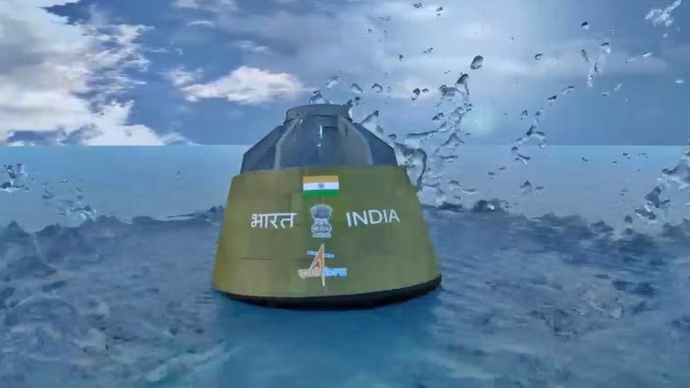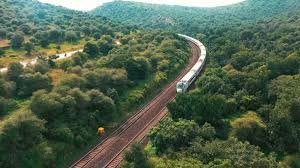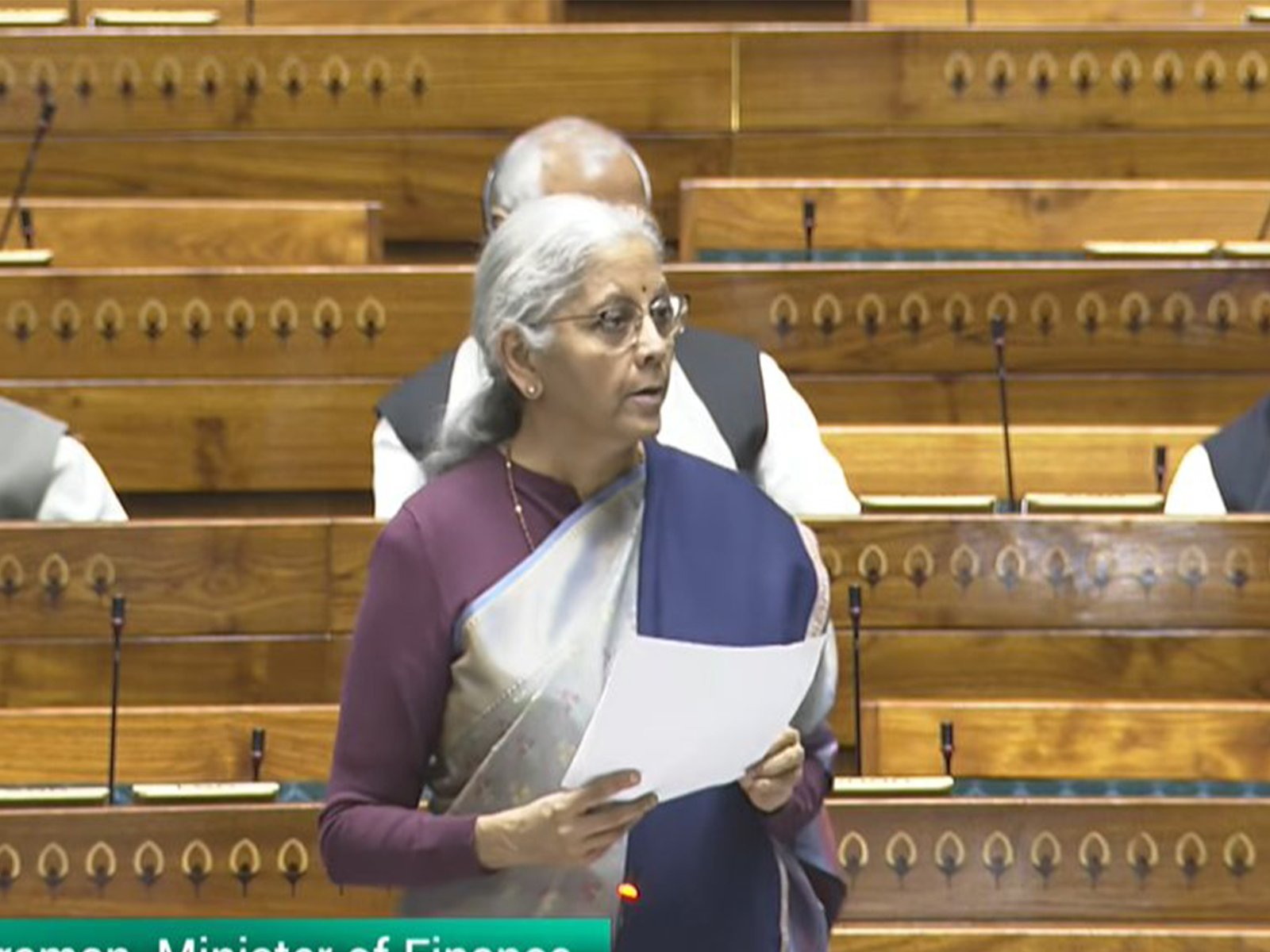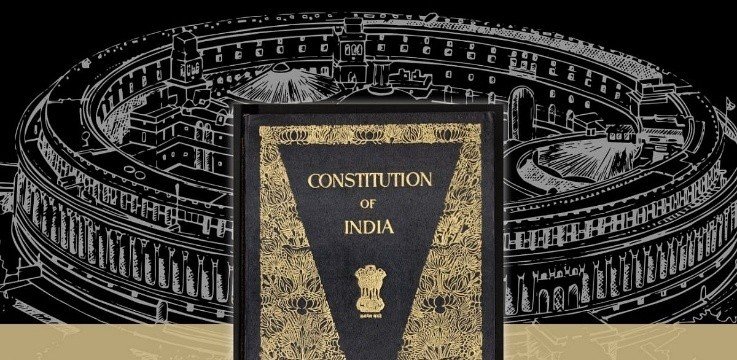Why in the News?
- India’s Gaganyaan programme uses a dedicated Crew Escape System (CES) to rapidly pull the crew module away from a failing launch vehicle during early atmospheric ascent.
- ISRO has already flight-tested CES technology (first successful test in October 2023) and plans further tests to validate astronaut safety across critical ascent conditions.
Gaganyaan Mission
- The Gaganyaan Mission is India’s first human spaceflight programme launched by the Indian Space Research Organisation (ISRO). Its main goal is to send Indian astronauts (Vyomnauts) to low Earth orbit (around 400 km altitude) and bring them back safely to Earth.
- Key Features:
- Launch Vehicle: The mission will use the Human-rated LVM3 rocket (HLVM3), a modified version of ISRO’s most powerful rocket, capable of carrying astronauts safely.
- Crew Module: A specially designed Crew Module will house the astronauts. It will have life support systems, navigation, and safety features.
- Crew Escape System (CES): A Crew Escape System is built to ensure astronaut safety. It can separate the crew module from the rocket in case of an emergency during launch and help it land safely in the sea.
- Orbit and Duration: The mission aims to carry a crew of three astronauts to a low-Earth orbit (~400 km) for a few days before re-entry and splashdown.
- Testing and Preparation:
- ISRO has already conducted uncrewed test flights to validate systems like the CES.
- Astronauts are undergoing training in India and Russia.
- Several test vehicle missions will be completed before the final human flight.
- Objectives:
- To demonstrate India’s capability to send humans to space and bring them back safely.
- To build indigenous technologies for life support, crew safety, and re-entry.
- To lay the foundation for future space exploration, including a possible space station.
- Significance:
- Positions India among a select group of nations (USA, Russia, China) with human spaceflight capability.
- Boosts India’s aerospace and defence technologies.
- Promotes STEM innovation, national pride, and self-reliance under the “Atmanirbhar Bharat” initiative.
- Phases of the Gaganyaan Mission
- Launch Phase
- The HLVM3 rocket lifts off from Sriharikota.
- Two large S200 solid boosters provide the initial thrust.
- Launch Phase
- The rocket carries the Crew Module (with astronauts) into space.
- Ascent Phase (Atmospheric Flight)
- The rocket passes through dense atmospheric layers.
- This is the most critical phase because of high speed and pressure.
- If any problem occurs, the Crew Escape System (CES) activates.
- CES pulls the Crew Module away to safety within seconds.
- Orbit Insertion
- The rocket places the Crew Module in Low Earth Orbit (~400 km).
- The astronauts start orbiting the Earth at around 28,000 km/hour.
- The module provides life support, power, and communication.
- In-Orbit Operations
- Astronauts conduct basic scientific experiments.
- ISRO monitors all systems — oxygen, pressure, and temperature.
- The mission lasts for a few days in orbit.
- Re-entry Phase
- The Crew Module fires small thrusters to slow down.
- It begins descending towards Earth’s atmosphere.
- Heat shields protect it from extreme temperatures (2000°C+).
- Descent and Parachute Deployment
- Multi-stage parachutes open one after another.
- The module slows down gradually for a soft landing.
- Splashdown and Recovery
- The Crew Module lands safely in the sea (Indian Ocean).
- Recovery ships and helicopters pick up the astronauts.
- Medical checks and debriefing follow the safe return.
Why a Crew Escape System (CES) is needed
- During early ascent the rocket accelerates to hypersonic speeds and faces huge structural loads.
- Solid-fuel S200 boosters on HLVM3 cannot be shut down once ignited, so if they malfunction the only option is to pull the crew module away quickly.
- Therefore, the CES has to pull the crew module away from the rocket faster than the rocket itself is moving, and it must do this within a few seconds to keep the astronauts safe.
How does the CES work?
- Gaganyaan uses a puller-type CES: a tower or motor assembly pulls the crew module away from the rocket.
- The CES can impart accelerations up to ~10 g for a few seconds; humans can tolerate such short pulses if strapped correctly (chest-to-seat orientation).
- After separation, the crew module is released and slowed by a multistage parachute system to ensure safe splashdown in the sea.
Types of CES and rationale for choice
- Puller type (used by Gaganyaan): rapid separation using solid motors or rockets above the crew module.
- Pusher type (used by some other systems): small liquid engines push the capsule away.
- Choice depends on integration constraints, propulsion technology and mission design.
Decision-making & monitoring systems
- An Integrated Vehicle Health Management (IVHM) system (sensors, electronics, software) continuously monitors vehicle health and crew status to trigger CES activation when needed.
- Timely and reliable detection is critical to avoid false triggers and to maximise crew survival.
Challenges and Way Forward
| Challenge | Way Forward |
| Verifying CES across flight regimes (transonic, supersonic, max Q) | Conduct multiple test flights simulating varied ascent trajectories and failure modes. |
| Human tolerance to high acceleration (up to ~10 g) | Rigorous biomedical testing, ergonomics design (seating posture), and medical screening for crew. |
| Avoiding false triggers of CES | Improve IVHM algorithms, redundancy, and sensor fusion to ensure reliable decision-making. |
| Safe descent & splashdown under varying sea conditions | Validate multistage parachute systems in diverse conditions and ensure robust recovery operations. |
| Integration with overall vehicle performance (mass, aerodynamics) | Iterative design optimisation to minimise weight penalty and aerodynamic impact; trade-off studies. |
Conclusion
The CES is a cornerstone of Gaganyaan’s human-rating strategy — it converts engineering safeguards into real-life survival chances for astronauts. ISRO’s progressive testing, IVHM integration, and attention to human factors show a methodical approach. Continued tests, medical readiness, and robust recovery procedures will be essential before crewed flights commence.
| EnsureIAS Mains Question Q. Explain the role and working of a Crew Escape System (CES) in human spaceflight. Assess the engineering and physiological challenges in designing a CES for a solid-booster rocket such as HLVM3, and suggest measures to validate crew safety. (250 Words) |
| EnsureIAS Prelims Question Q. With reference to Crew Escape Systems (CES) and Gaganyaan, consider the following statements: 1. A puller-type CES extracts the crew module by pulling it away from the launch vehicle, while a pusher-type pushes it away using separate engines. 2. Solid rocket boosters can be shut down in flight, which reduces the need for a high-acceleration CES. 3. Integrated Vehicle Health Management (IVHM) helps decide when to trigger the CES by monitoring vehicle and crew parameters. 4. After CES separation, the crew module always performs a controlled runway landing. Which of the statements given above are correct? Answer: A. 1 and 3 only Explanation: Statement 1 is correct: Puller and pusher are two CES architectures. The puller uses a tower or motor to pull the capsule clear (used in Gaganyaan); the pusher uses small thrusters or engines to push the capsule away (used by some other crewed systems). Statement 2 is incorrect: Solid rocket boosters cannot be shut down once ignited. This inability makes rapid crew extraction essential if a failure occurs during booster burn, hence the need for a high-acceleration CES. Statement 3 is correct: The IVHM aggregates sensor data on vehicle systems and crew health, running diagnostics to detect anomalies and decide whether CES activation is necessary, reducing false positives and improving crew survivability. Statement 4 is incorrect: After CES separation, the standard path is parachute-assisted descent to a sea splashdown, not a runway landing. Only a few spaceflight systems use horizontal runway landings; crew modules typically splash down or land under parachutes. |
Also Read | |
| UPSC Foundation Course | UPSC Daily Current Affairs |
| UPSC Monthly Magazine | CSAT Foundation Course |
| Free MCQs for UPSC Prelims | UPSC Test Series |
| ENSURE IAS NOTES | Our Booklist |





